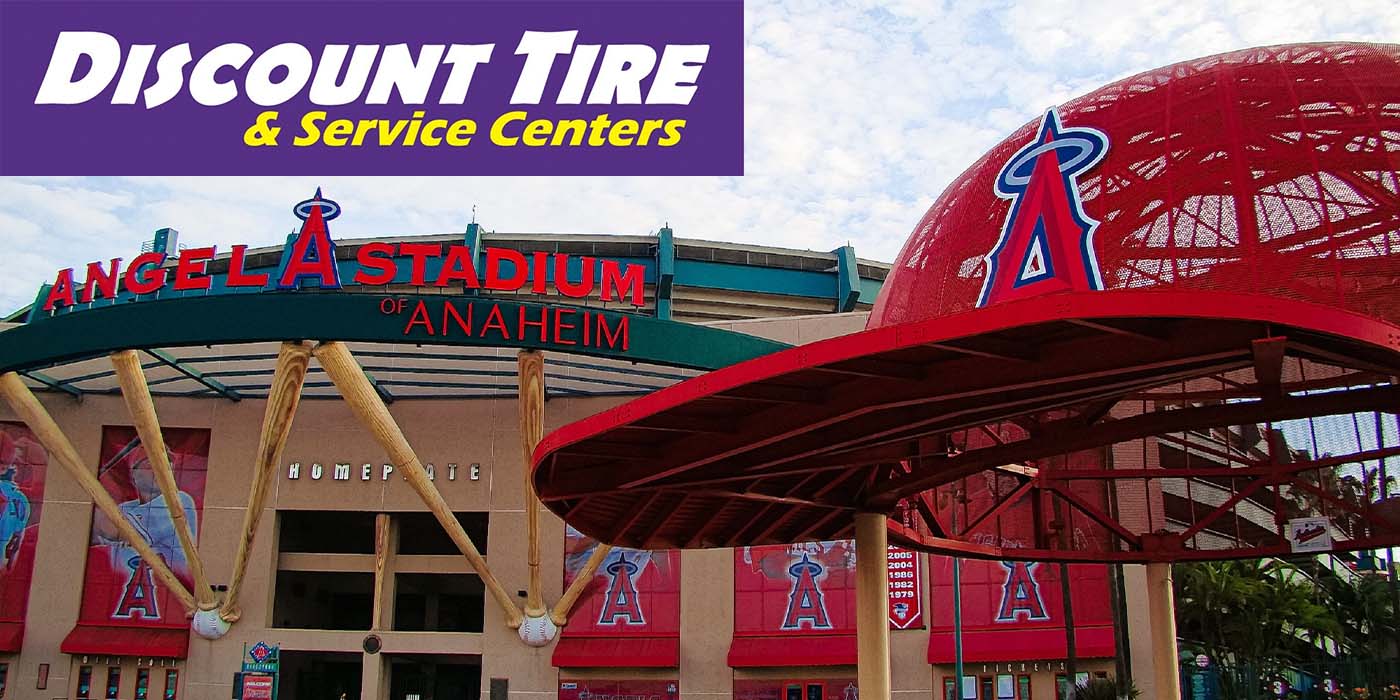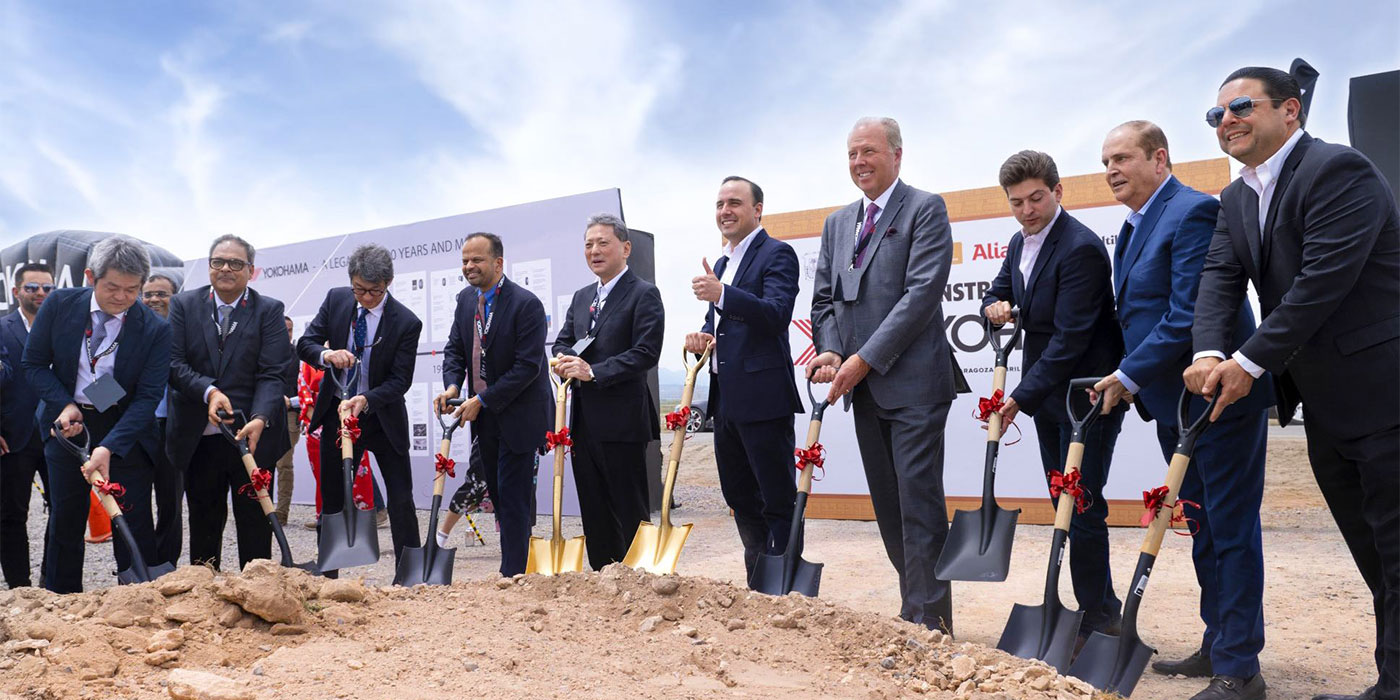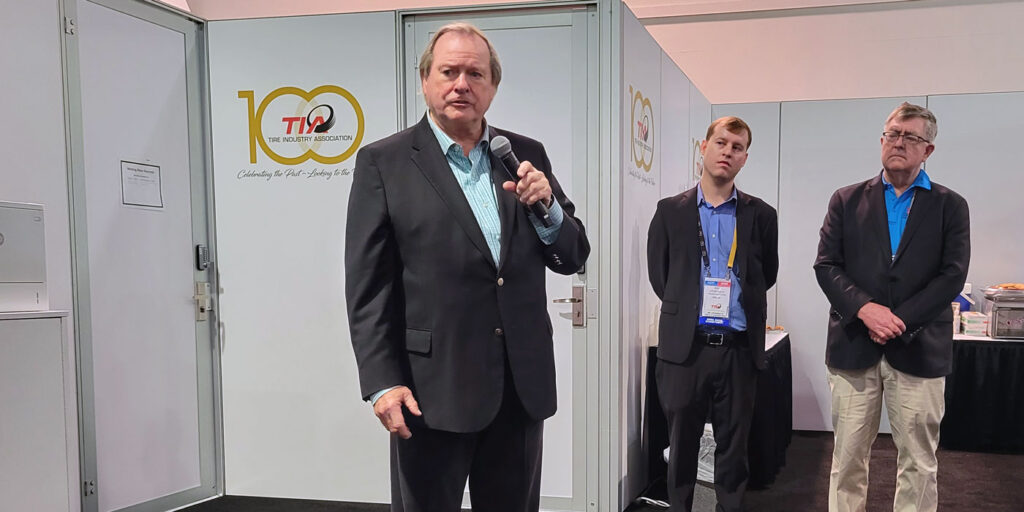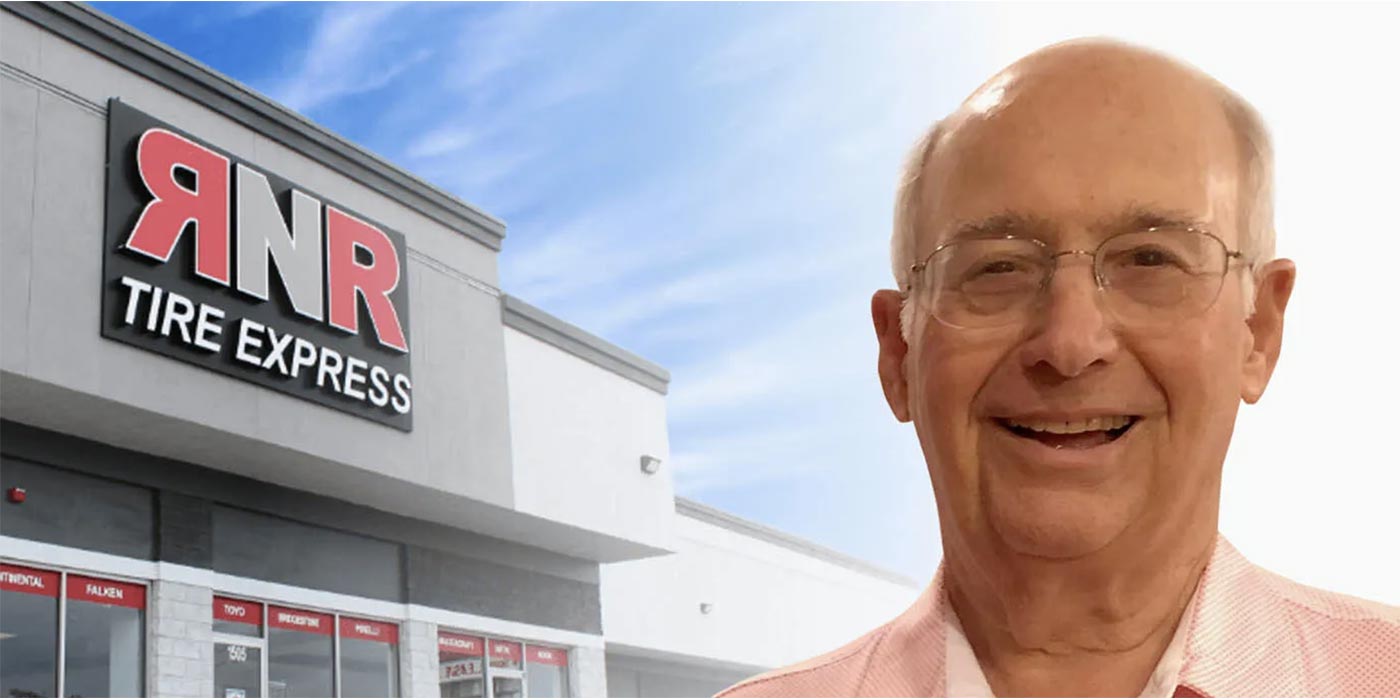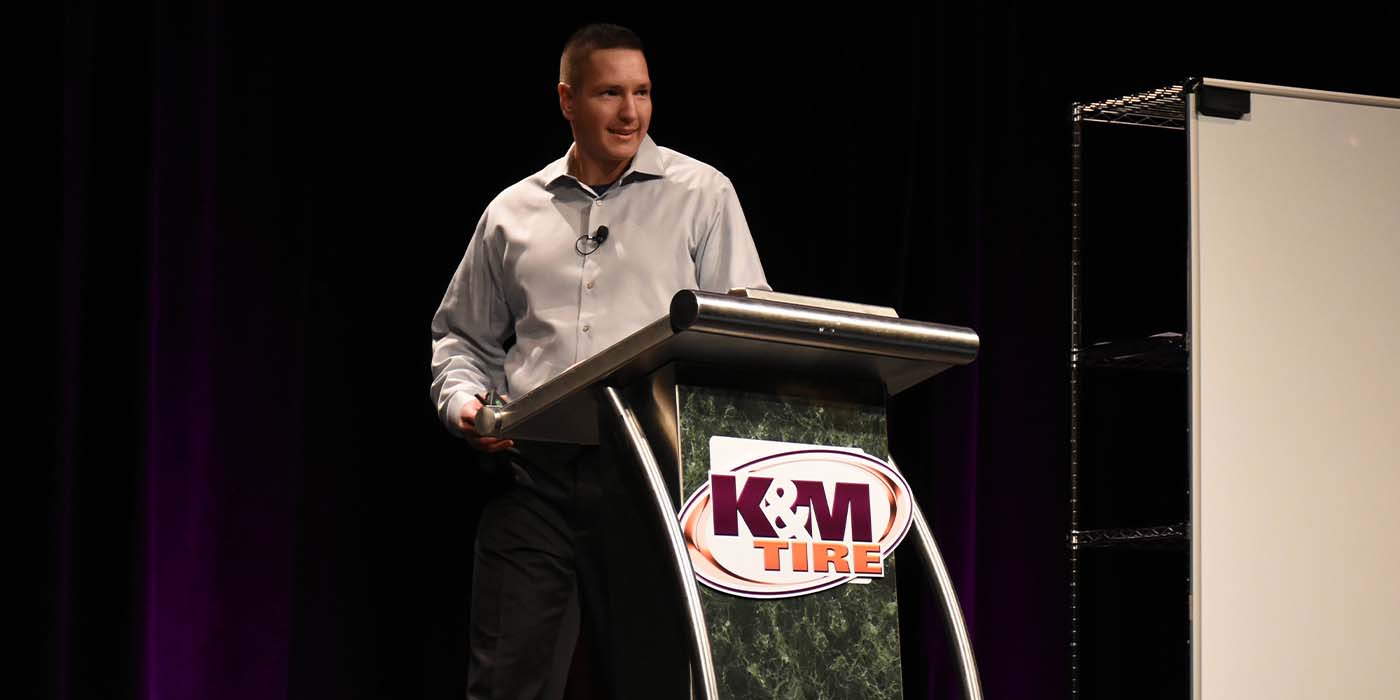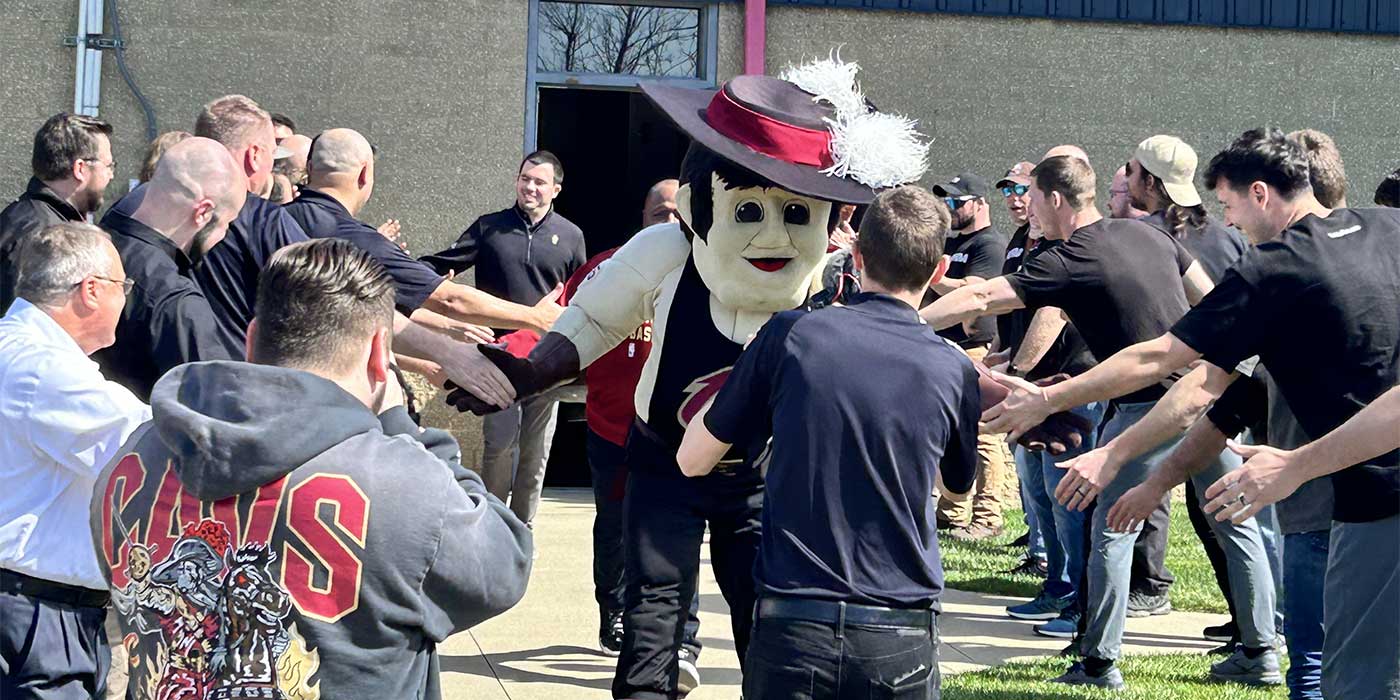 The annual SEMA Show is a great time to catch up with industry friends, see the latest products and consider the latest trends. It is also a good time to sit down with industry leaders to get their views on current affairs.
The annual SEMA Show is a great time to catch up with industry friends, see the latest products and consider the latest trends. It is also a good time to sit down with industry leaders to get their views on current affairs.
The day before the show formally opened, we sat down with incoming TIA president Dan Beach and association executive vice president Roy Littlefield to talk about a few important tire industry issues. Of particular interest was new developments regarding TIA’s potential role in Congress’ mandated consumer tire education program.
This morning, TIA’s board passed a resolution regarding potential involvement in consumer education. Can you elaborate?
Littlefield: In the Energy Bill passed last year, RMA put in a provision calling for a national consumer education program. Now, I’m not sure why they did that. I’m not sure if they were trying to fill a need or get TIA off the checkoff program issue. But what we have now is a very serious situation because you have a great opportunity for the industry if it’s handled correctly but it could be a great challenge if it’s not handled correctly.
What we have now is NHTSA developing proposed regulations on tire fuel efficiency testing and labeling that are supposed to come out in the first quarter of 2009. This will include how the education program they are mandated by Congress to have will be implemented. There are a lot of programs like this that are outsourced by the government because they don’t have the capability to handle them. For instance, there is a truck safety program that the American Highway Users Alliance was contracted to operate. So here is an outside group running this congressionally mandated program.
Our concern is who is going to run this education program and what impact that will have. What TIA is trying to do is reach out to the manufacturers, to RMA and to all interested parties and say, ‘Let us go to NHTSA with the support of the industry and have TIA run this program for the government.’
You can see how this could play out in different ways. Say this is opened up to some consumer groups, like Public Citizen, and Joan Claybrook or Sean Kane or someone like that ends up running this program. They could start running ads on TV – at government expense – on everything from rolling resistance to used tires to tread depth to noise. You could end up with the ‘industry’ pushing a program that could end up creating more legislation than what happened with the TREAD Act. So it’s a great concern to us.
This has tremendous potential. We’re talking about a government-funded program to go out and do what we had hoped the TIRES checkoff program would do. This could be the best of all worlds. This could be something where we would work with Congress on appropriations, and work with the industry to do something very meaningful for the consumer. On the other hand, this could be an absolute disaster if the wrong people end up running this program and they attack the industry instead of working with the industry to educate to consumer. The resolution TIA passed sends a message that we are ready to take this on.
So, in its own way it’s sort of a backdoor checkoff program…
 Littlefield: It is, and that could be a very positive thing. But it is also going to be a lot of money if it gets in the wrong hands. Just look at what’s going on with all of the publicity on tire aging. Say that some people on the other side of the tire aging issue, who don’t really understand the industry and don’t really understand the background, have money to run ads on TV on tire aging. That could be a disaster. Look at the inventory nightmare for dealers if you ended up with legislation. Again, I think this is a great opportunity for the industry, but I’m not sure we as an industry are where we need to be to make sure that it turns into an opportunity rather than a challenge.
Littlefield: It is, and that could be a very positive thing. But it is also going to be a lot of money if it gets in the wrong hands. Just look at what’s going on with all of the publicity on tire aging. Say that some people on the other side of the tire aging issue, who don’t really understand the industry and don’t really understand the background, have money to run ads on TV on tire aging. That could be a disaster. Look at the inventory nightmare for dealers if you ended up with legislation. Again, I think this is a great opportunity for the industry, but I’m not sure we as an industry are where we need to be to make sure that it turns into an opportunity rather than a challenge.
Where is TIA at on the tire aging issue?
Beach: We introduced a couple of our own bulletins on tire aging in early November. The problem on the tire aging subject is there is no data. No one has invested the money and time to come up with the definitive answers on tire aging, and there are so many variables in the process. A tire aging process may be different in northern Canada vs. Arizona. Sometimes a tire that’s five or six years old may have been stored on the shelf for six years in proper conditions, and another time it may have been on a vehicle stored in someone’s garage. There are so many variables that it’s very hard to come up with a definitive policy. So we are advising members to beware of the issue – without definitive dates – and to rotate their inventory, be vigilant, use good business practices and to use the freshest products possible.
Those variables exist all over the world, so why has Japan and Europe’s tiremakers come out and say 10 years is the service limit and we’ve taking no action here?
Littlefield: What you would find is that those groups are more pro-government involvement. It’s their mindset and their tradition. They go to the government pushing for a position many times and are much more willing to work with the government to gain a position. In this country, often we are concerned about going to the government first, though there have been some instances where we as an industry have done that. But there seems to be more of a mindset here to have less government regulation. It’s a general business attitude that less government is better and over there they seem to have a mindset that more government is better. As a result, they seem to be at the cutting edge on this subject and we seem to be in more of a defensive position.
But what Dan was saying is TIA, because of the publicity, is trying to be more proactive inside the industry before we go outside the industry. We have developed some positions and have shared them with RMA to see if we can’t come together and have a unified industry position. We have shared language with them, and they have made some changes and sent it back to us. So there is a healthy communication going on inside the industry, which is different than what it has been in the past. The fact that RMA is working with us is a symbol of their recognition of the dealer’s professionalism and their concern on this issue. It has been more about the dealers being proactive rather than the manufacturers, but, within the industry, we need to try to come up with a consensus.
The dealers I talk to, by and large, feel like they have been hung out to dry on the subject. They are the ones being left to answer consumer questions about what was on TV. I’m sure there have been conversatiuoins behind the scenes, but the outside world is looking at it and saying…
Beach: I think it is hard for an organization like ours to come up with defintive dates without the data, without the testing, the research or the incredible investment to come up with that. Once you come up with the dates those are set in stone for litigation, for problems down the road. So it better be good data. But so far the tire manufacturers haven’t taken a position publicly.
Littlefield: You make a good point and the TIA leadership has really taken that seriously. In one of the meetings we had with tire manufacturers this year, one of the manufacturers expressed the same frustrations with the points you just made. That executive said it was like TIA was going to have to take the lead on this and force the manufacturers to have to take a position on this. Peggy (Fisher) and Dan came back from that meeting and actually drafted the first shot at a position and gave it to the manufacturers. It’s gone back and forth now and we just got the latest draft back in late October. So there are concerns, like you’ve said. We’ve gotten calls from dealers expressing frustration with the entire subject. You are correct that it is out there, and we are trying to work within the industry on the issue.
What is the status of TIA’s certified dealer program, which was called for in TIA’s strategic plan?
Littlefield: We’re still working it. That became a much bigger issue than we ever anticipated going in. We’re taking it in steps and some of the first steps are tire technician certification programs, getting more of our techs certified through our programs, and working with insurance companies for lower deductibles. We’re doing a lot of those things. We had to recognize that this is a long-term project and it will be very expensive. To actually have a program that has recognition with consumers is going to take a lot of money. We’re working with the training programs to get them to a certain level, working with the insurance companies. We recognize that this is a lofty goal that we do not want to lose sight of, but it’s going to take a lot longer to accomplish.
What the latest on tire counterfeiting?
Littlefield: We’ve met with the manufacturers who have shown us examples of counterfeit tires and mislabeled tires. We went to Germany this year to meet with Bipaver to get their background on what they are doing. Bipaver is flat out just recommending to their dealers that they not buy them, not get involved with them, not trade with them, and not retread them. We’ve got a lot more anti-trust issues to deal with here that we have to be concerned about. We tell dealers that if they find them or see them, they should contact us and we will contact the impacted manufacturer and that the manufacturer will work with them. It’s going to be an educational issue. We have tried to get retread manufacturers and new tire manufacturers to work with us on guidelines for dealers to look at. They have been reluctant to get involved in something like that because of anti-trust issues. I’m not sure we’re at the end of that. There is more to be done. There is a push for guidelines but there’s a reluctance for manufacturers to help us develop them.
What about a national tread depth limit?
Beach: We did have some discussions on that. On one hand it seems to be a very sensible thing to do, what can it hurt to go to 4/32nds vs. 2/32nds. But we have had push back by some manufacturers because that change would mean an immediate increase in sales of tires and the capacity isn’t there really for the manufacturers to handle that. They contend that they have backorders already. It’s obvious that deeper tread depth is safer, but once again, the data isn’t really there to say if it should be 4, 5, 6 or 10/32nds. What is the safest?
Littlefield: A few years ago we agreed with RMA to make a push for state safety inspection programs. There was a time when NHTSA withheld from states highway funding money if a state didn’t consider things like safety inspections. They stopped that practice, so now you now have 22 states, I think, with some kind of inspection, but only 17 that have periodic inspections. We worked with RMA to see if we could introduce a model bill that we could use in all 50 states. So we picked a state that we thought would be easy to lobby in, and we picked Maryland and we tried to put in a resolution for a bill. Why Maryland? Well, it’s close to our offices, it has a liberal legislature, and NHTSA reported that Maryland had one of the best safety inspection programs. But that program is a transfer of title inspection, so if you kept a car in the same family for 20 years it was never inspected. Anyway, we tried to get the resolution through and we can’t even get it out of committee. We’ve been trying for the last two years. It is very frustrating. There is a sense in state legislatures that this idea is a mandate on consumers that they don’t want. Without NHTSA’s funding pressure, they’ve cut back on the inspection programs and there doesn’t seem to be any fire in the belly to reach out and impose something on consumers.
Also, as Dan was pointing out, if you go to 4/32nds where do you go? We don’t enforce 2/32nds now. There is no federal mandate on it; there is no support from NHTSA, which is the administration that should be pushing this. And there is no sentiment in the state legislatures to enforce what there is now. Part of the problem, as an association, is if you endorse it where do you go with it? We thought the first step would be to push for state safety inspections, and we couldn’t move the ball on that.
TIA does a lot of work on tire tech training. Any thought to business operations training, business owner training?
Littlefield: We have Chubby Frederick writing articles in TIA’s magazine. We endorse Chubby and the intent was to bring some of that kind of training to members. I’m not sure we’re doing enough. Bringing him on was a recognition that we don’t have that expertise on staff. We reached out to someone who was very big with some of the manufacturers.
Beach: One of the issues that you get into when training for salespeople or middle management is the culture thing. Each company has its own identity and culture and it really sets in with those areas. Technical training is easier because mounting a tire is mounting a tire, racking a car is racking a car. So a generic approach there works across the board. But when you get outside of that you are crossing that cultural line and I think there is some push back from dealers who want more involvement in setting that agenda with employees.

